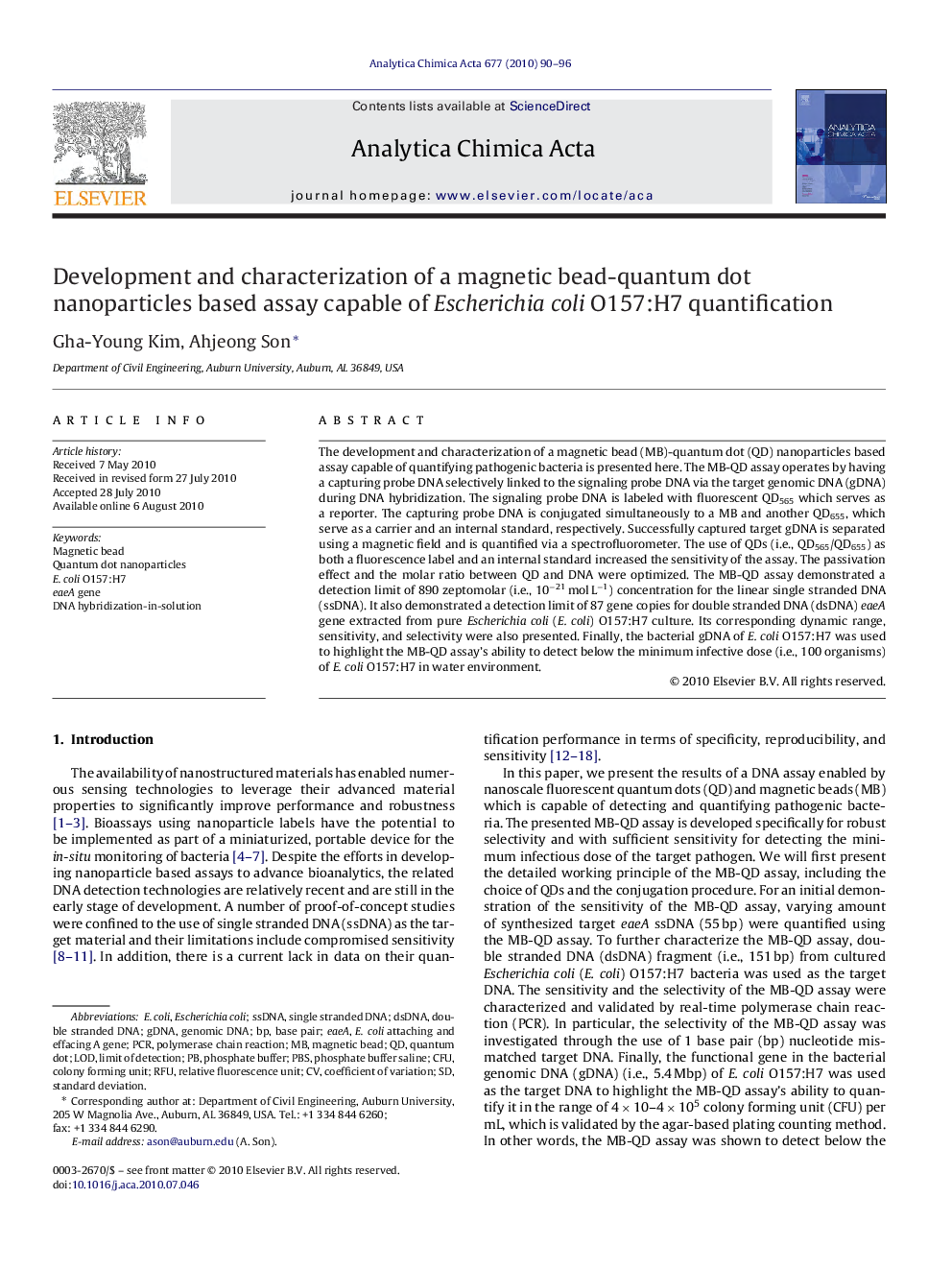| Article ID | Journal | Published Year | Pages | File Type |
|---|---|---|---|---|
| 1168179 | Analytica Chimica Acta | 2010 | 7 Pages |
The development and characterization of a magnetic bead (MB)-quantum dot (QD) nanoparticles based assay capable of quantifying pathogenic bacteria is presented here. The MB-QD assay operates by having a capturing probe DNA selectively linked to the signaling probe DNA via the target genomic DNA (gDNA) during DNA hybridization. The signaling probe DNA is labeled with fluorescent QD565 which serves as a reporter. The capturing probe DNA is conjugated simultaneously to a MB and another QD655, which serve as a carrier and an internal standard, respectively. Successfully captured target gDNA is separated using a magnetic field and is quantified via a spectrofluorometer. The use of QDs (i.e., QD565/QD655) as both a fluorescence label and an internal standard increased the sensitivity of the assay. The passivation effect and the molar ratio between QD and DNA were optimized. The MB-QD assay demonstrated a detection limit of 890 zeptomolar (i.e., 10−21 mol L−1) concentration for the linear single stranded DNA (ssDNA). It also demonstrated a detection limit of 87 gene copies for double stranded DNA (dsDNA) eaeA gene extracted from pure Escherichia coli (E. coli) O157:H7 culture. Its corresponding dynamic range, sensitivity, and selectivity were also presented. Finally, the bacterial gDNA of E. coli O157:H7 was used to highlight the MB-QD assay's ability to detect below the minimum infective dose (i.e., 100 organisms) of E. coli O157:H7 in water environment.
